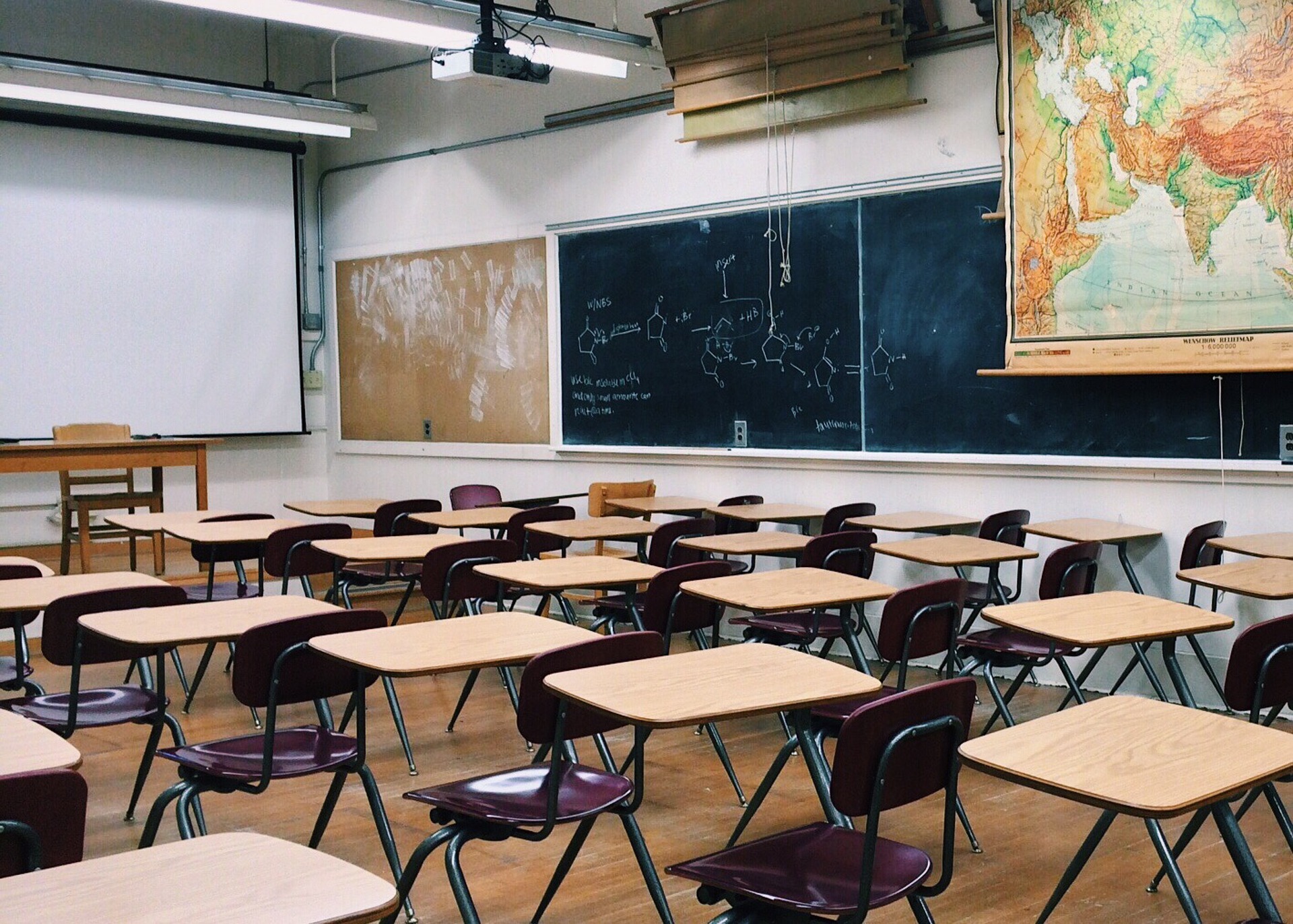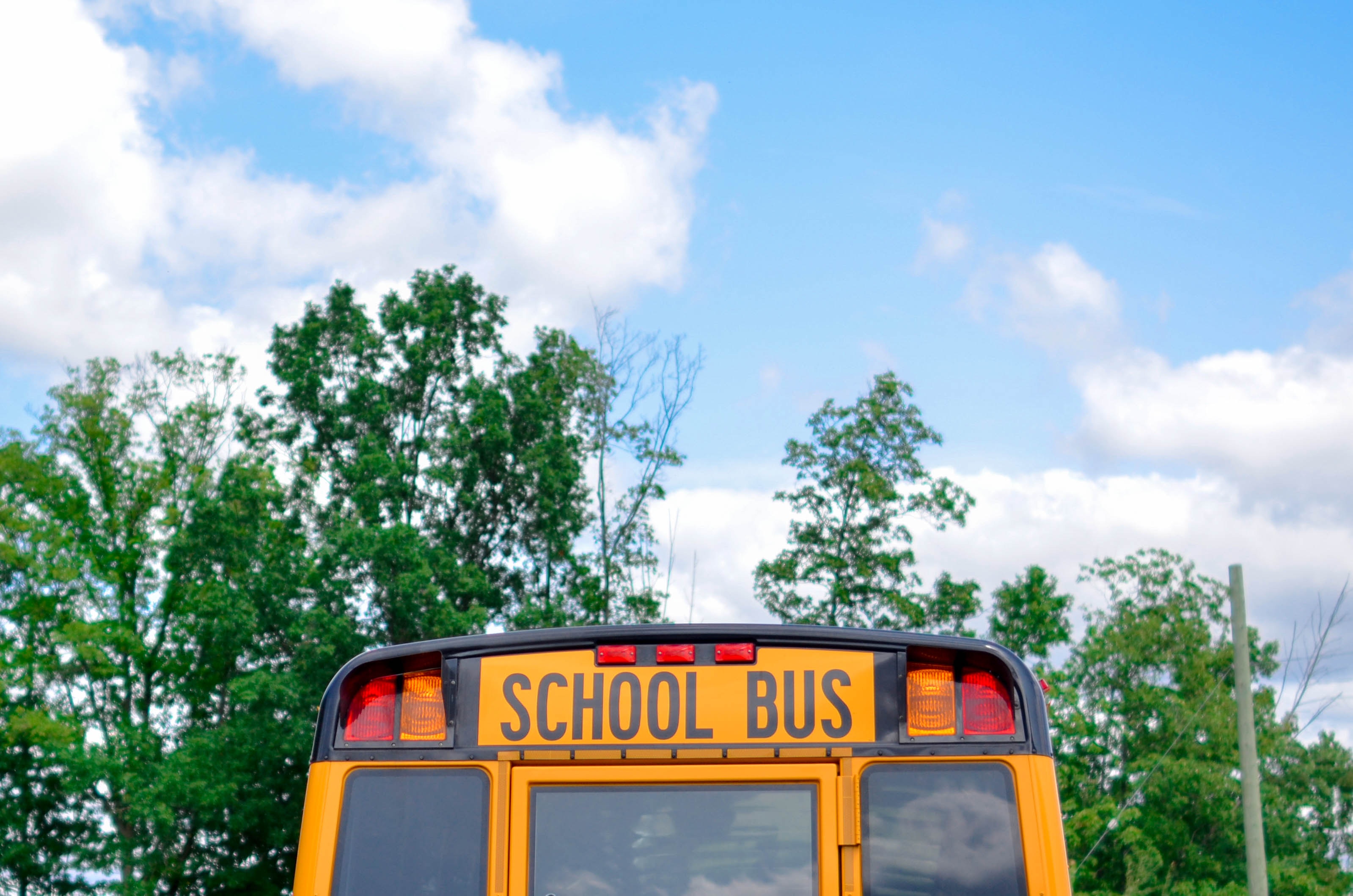
Navigating today’s educational system is not an easy or straightforward task for anyone, whether students, parents, teachers, or administrators. For parents of children with autism spectrum disorder, making sure your kids get a fair and useful education involves even more complicated considerations and decisions.
This guide discusses issues surrounding the education of students on the autism spectrum, including the rights and responsibilities of parties involved, plus governing laws, programs, and additional resources. The information also includes classroom concerns and accommodations, considerations for choosing an appropriate school setting, options for dispute resolution, and tips for further advocacy.
Whether you decide to homeschool or place your child in the public education system, it’s important to know the available options and stay informed to advocate most effectively for your child’s education and well-being.
Educational policy, childhood disability advocacy, and the legislation governing both have produced terms and acronyms that might require clarification if you’re new to the system. To better understand the points and tips that follow, here is a list of brief explanations and definitions. You can find elaboration on each term and topic further below in this guide.

A public education environment can offer your child on the autism spectrum access to special education curricula as well as specialized resources and services tailored to address their needs. It can also provide opportunities to socialize and expand their horizons through contact with students in the general population. But public schooling can present many problems for your student with autism, too.
Your child with autism may be unable to understand or communicate their needs to teachers or fellow students. They can have trouble understanding classroom directions and instruction, especially as delivered by teachers with subtle vocal and facial cues. Underdeveloped social skills can lead to inappropriate social interactions or challenging behaviors, sometimes resulting in bullying or ostracizing. Difficulties with imaginative or creative play can obstruct your child’s interactions with other children, also rendering some teaching strategies ineffective. Also, sensory issues can make it difficult for your child to cope with noisy environments, endure being touched by others, or maintain eye contact.
This inability to fully comprehend and participate in the surrounding world can make public education stressful for your child. Also, teachers often report that they find it difficult to meet the needs of students on the autism spectrum. Teachers need to be aware of your student’s disorder, and ideally should have specific training in autism education, so that they are able to help your child get the best out of their classroom experience — however, school systems’ limited resources often do not accommodate specialized training for teachers.
Every child is different, and teachers must constantly adjust their techniques and modalities to accommodate each of them. Ideally — armed with the information from your child’s IEP and techniques that have been proven to work — a teacher would become familiar with your child’s particular needs and discern which method works best.
Experimentation and close observation have brought forward several strategies for the classroom that work best to engage and instruct students on the autism spectrum. Some of these include:
In any educational setting, your child on the autism spectrum will require consistent advocacy from you and other adults to obtain the most appropriate and useful education possible. The right fit is dependent on a wide variety of factors, balancing your child’s needs and abilities with the resources available.
When you’re trying to choose a learning environment, the first thing to do is get a clear picture of your child’s abilities and needs. Ask yourself questions like these about your child:
Next, survey the resources and schooling options available in your geographic area and income range. Consider questions such as the following:
The educational choices available may be limited. You might live in an area where nothing exists other than the regular public school system. Costs can also be a major factor if specialized schools or support need to be paid for. These are other elements to keep in mind when making this decision.

Potential learning environments for children with autism spectrum disorder can cover a wide range, from a public school’s general education classroom to one equipped with extra resources, a class focused on special needs or an autism-only setting. Your child might thrive in an inclusive or a segregated classroom situation, or be happiest in a private school that caters to particular teaching styles or to special needs students. Or you might find that teaching your child at home presents the most workable option.
In some cases, the education of a child on the autism spectrum can effectively be split between two environments — say, for part of the day in a special education program and for the other part of the day with typical students in a regular classroom. Or your child could receive specialized or home-based education while later being included in certain public-school classes, according to their ability to cope and keep up.
These integration models are based on a growing trend to provide a 'continuum of care,' in which individualized support tapers off as a child learns the skills needed to study in regular schools. Ideally, your child could move through a school specifically designed for students with autism, then to special ed classes in the regular public school system, then to a regular classroom with support options like a teacher's aide or tutoring.
The inclusion approach is being increasingly supported in public schools, where students with autism or other disabilities are included in classes with typical children, but also may receive significant support to enhance their chances of classroom success. Support options can include a designated one-on-one teacher’s aide, adapted curriculum, special social groups, and more.
Much research backs up the idea that inclusion yields positive results for all students, with or without disabilities. Teachers in inclusive classrooms must employ a range of learning modalities (visual, auditory, kinesthetic, etc.), addressing the reality that students at all levels learn in a variety of ways. Even children with moderate to severe disabilities can benefit from inclusive environments, studies have shown, learning behavioral and socialization skills in addition to the standard curriculum.
Inclusion can help place students on the autism spectrum in their least restrictive environment. This term signifies that students with disabilities are entitled under IDEA regulations to be educated with their non-disabled peers, to the greatest extent appropriate. They are guaranteed access to the general curriculum, extracurricular activities, or any other program that non-disabled peers would be able to access. These students also receive any supplementary aids and services necessary to help them achieve educational goals while learning alongside non-disabled peers.
If the nature or severity of a child’s disability prevents them from achieving these goals in a regular education setting, then the student would be placed in a more restrictive environment, such as a special school or a hospital program. Generally, the less opportunity a student has to interact and learn with non-disabled peers, the more the placement is considered to be restricted.

For many families, public school is the right choice for educating a child with autism. The first requirement in securing a public school education for your child is an understanding of the process that admits a student into the special education system, as defined under the Individual with Disabilities Education Act. (More detailed information on IDEA can be found below.)
Initiating your child in the IDEA special education process for public schooling requires numerous steps, including:
Once your child is proven eligible and it’s time to look at special education in your local public school system, you have the right to participate in research and planning for their future education. Below are some attributes of effective classrooms to look for:
As part of the IDEA special education process, an Individualized Education Program will be created for your child. Every student must have one of these documents to receive special education services, as the IEP is the cornerstone governing the public education of a child with autism spectrum disorder (or any disability as identified by the education system). Schools are required by law to teach each student in accordance with the specifications set out in their IEP.
You likely have many questions about the IEP, as most parents do at the beginning. These questions can include:
What is the purpose of an IEP?
The IEP identifies and sets reasonable goals for the education of a child with a disability. It also outlines the services and accommodations that must be made available to help the student achieve those specified goals, and specifies ways to evaluate and measure progress. The IEP must be designed to meet the student's special needs in the least restrictive environment appropriate to that child.
An IEP outlines the student’s initial levels of achievement, academic and social needs, measurable annual goals, the services and accommodations necessary for them to meet those goals, and methods of measuring the student’s progress.
The team that devises a student’s IEP consists of experts and people concerned about the welfare of the child, including:
First the team and qualified professionals evaluate and determine that a child has one of the disabilities listed in IDEA and qualifies to receive special education and related services. An IEP meeting must be held within 30 calendar days after this determination. It’s also required by law that a child’s IEP must be reviewed annually to determine if the annual goals are being met; the document must be revised as appropriate.
There will likely be moments when your judgment differs from that of your child’s teachers or other members of the IEP team. At every step along the way, federal law has put in place specific procedural safeguards to protect yours and your child’s rights. If you and the school disagree on placement, programming, IEP objectives, academic goals, or other aspects of your child’s education, you have any of the following approaches at your disposal:

National and state laws interact to govern the public education of children with disabilities, the providing of supportive services, measurement of the efficacy of related policies, and protection of the rights of these children and their families.
The Americans with Disabilities Act is a civil rights law that prohibits discrimination against individuals with disabilities in all areas of public life, including jobs, schools, transportation, and places open to the general public. Its purpose is to make sure that people with disabilities have the same rights and opportunities as everyone else. The ADA guarantees equal opportunity for individuals with disabilities in public accommodations, employment, transportation, telecommunications, and state and local government services including public schools.
The Individuals with Disabilities Education Act is a central part of federal special education law that ensures a free, appropriate public education to eligible children with disabilities throughout the nation. The law governs the way that states and public agencies provide early intervention, special education, and related services to more than 6.5 million eligible infants, toddlers, children, and youth with disabilities.
The IDEA also protects children with disabilities and their parents by ensuring parents the following rights:
Congress reauthorized the IDEA in 2004, instituting significant changes that resulted in the more inclusive Individuals with Disabilities Education Improvement Act. The IDEIA amendments required states to establish performance objectives for students with disabilities that align with those of their peers without disabilities. The update also mandated that schools report progress on standardized testing, and addressed the need to improve graduation and dropout rates among students with disabilities.
Congress most recently amended the IDEA through the Every Student Succeeds Act, in December 2015. The ESSA is a bipartisan measure reauthorizing the 50-year-old national education law that signals a longstanding commitment to equal opportunity for all students.
The ESSA includes provisions that help ensure success for students and schools. The law:
Many states have their own disability rights laws in place to govern eligibility criteria, standardized testing, graduation requirements, and other aspects of special education. When the state laws enhance the mandates of the ADA and IDEA, then state laws take precedence. To the extent that a state law conflicts with the ADA, the state law is preempted by federal law.
Each state may use different criteria to arrive at definitions of who is protected or what entities are required to comply, or they may stipulate different requirements or prohibitions. Some states provide an agency, either mandatory or voluntary, to assist with investigation and enforcement. States have their own policies governing the use of restraint and seclusion as disciplinary tactics and may provide different remedies, such as damages or criminal penalties, for violations.
If a state mandate is in conflict with the rights afforded under federal acts, then parents and family members of students with disabilities have the right to make sure their loved ones are served under the federal directives.
Governmental agencies, school districts, and nonprofit service agencies exist for the purpose of offering support to students on the autism spectrum and their families. For further help or information, consider any of the following:

Homeschooling your child on the autism spectrum is legal and viable — an increasing number of parents are choosing this option. A main reason: No one knows your child better than you do. Homeschooling can provide the opportunity to focus on your child’s unique strengths, interests, and abilities, compensating for weaknesses and allowing success to inspire more success.
When you homeschool, you can observe your child’s learning style and create an educational program that fits. You can incorporate repeated and simplified instructions, written or delivered visually rather than verbally. You can give clear expectations, immediate feedback, one-on-one instruction, a student-centered curriculum, and frequent breaks as needed. And your home can provide a learning environment free from the social stress, excessive noise, sensory overload, and other disadvantages of traditional school settings.
Even with all its potential benefits, homeschooling a child with autism is a challenging endeavor, even under “perfect” circumstances. How do you know if it’s right for you and your family? Begin by asking yourself the questions found in the Influencing Factors to Consider section, above. These will help you examine your child’s needs and abilities, and the resources available to you locally and online.
Consider personal factors, as well. If you suspect any of the following conditions are true, you might want to consider an alternative route to schooling:
Also consider the following pros and cons to homeschooling your child with autism:
Pros
Cons
Being well informed — about your child’s needs, your own availability and capability, and the resources available to your family while homeschooling — is the key to deciding whether or not this is the path for you.
You’ve reviewed the pros and cons. You’ve asked yourself the hard questions. And you’ve decided to homeschool your child with autism. So how do you start? Here are some tips for building your homeschool foundations:
No two children with autism are alike. This means that there’s no single “right” approach to educating a child with autism. Fortunately, plenty of curriculum tools, support communities, and information sources are available to help your family homeschool your child with autism. These concepts and strategies have proven beneficial, no matter where your child falls on the spectrum.
Going the homeschool route can offer you a variety of curricula and teaching methodologies, making possible an education plan tailor-made to fit the unique needs your child with autism. One-on-one lessons, interest-based learning, and technology-based instruction are all successful approaches that can make the homeschool experience rewarding for everyone.
Studies have found that low teacher-student ratios are beneficial in any educational environment, and specialized autism programs tend to be successful because they’re usually structured 1-on-1 or 1-on-2. Such programs are resource-intensive and expensive to implement in schools; but in a homeschool setting, the teacher is already designated and doesn’t need to share attention with a classroom full of other students.
This specialized attention can minimize distractions and maximize focus for a student with autism, decreasing the time it takes to teach new skills and practice acquired ones. It also helps facilitate immediate information processing, feedback, and correction — factors that also make home education programs successful.
Individuals on the autism spectrum often develop an intense interest about a specific topic. Children with autism often prefer to engage solely with their object of interest to the exclusion of everything else, impeding their concentration on other subjects. While this poses a hindrance in traditional school settings, such focused interest can be used in a homeschool environment to introduce new concepts and skills.
For children on the autism spectrum, facing new information or experiences can be stressful. Parents can try to ease these transitions by employing the child’s special interest to get and hold their attention, exploring the subject deeply with them, then gradually introducing new concepts that are related. Framing new subject matter in the context of what fascinates your child can expand their conception of their favorite topic and possibly spark eventual interest in other topics, as well.
This method can be used to teach skills in multiple scholastic areas. For instance, you can teach writing skills by showing your child how to write the word for their interest — “frog,” for example — and helping them practice writing while they tell you about their love of the subject. Or you can introduce counting and mathematical concepts using images of frogs as the units to be counted, added, or subtracted.
Students on the autism spectrum often gravitate toward technology, and digital innovations are paving the way in special needs education. Augmentative and alternative communication apps can help improve speech and communication through images, videos, and audio-based content.
Working with tablets and apps offers an aspect of motivation and stimuli not found in other educational techniques. Many students on the autism spectrum are tactile or kinesthetic learners who find touch-screen functionality more interactive and engaging than speech. The visual aspect of apps also seems to hold the attention of children with autism for much longer periods, and many can provide the repetition needed to help these students assimilate and retain information.
Apps for students with autism are now used in many school environments — but still to a limited degree, often due to funding, time, and availability issues. As a parent, though, you can easily implement many of these digital tools to enhance effectiveness and pleasure in your child’s homeschooling experience.

In America, homeschooling is legal in all 50 states, but laws governing the home education of students (at all levels) can differ by state. There also may be additional legal criteria involved in the care and education of students with disabilities in your state. To make sure you’re familiar with the laws and fulfilling the necessary requirements in your state, consult these resources provided by the Home School Legal Defense Association:
Home school laws in your state (searchable by state)
In addition to listing the pertinent legislation for each state, the site also provides links to necessary forms, legal contacts, support organizations, FAQs, and other resources.
Special education provisions in the 50 states and territories (also searchable by state)
Most states with homeschooling regulations require nothing additional of parents who choose to homeschool their students with special needs, but some states impose additional requirements. These are noted in the summary of provisions for each state on this site.
About 90% of funding for public school special education programs comes from the state — not the federal government — so these states can distribute that money in any way they choose. For states that have enacted laws availing special education services to homeschool students, these provisions are also noted in the summary of states on this site.
The Coalition for Responsible Home Education also maintains a database of current homeschool laws by state (searchable by state), along with information on student assessment and intervention, instruction and subjects, parental qualifications, record keeping, homeschooling history, and particular considerations for students who are at risk or have special needs.

Whether you educate your child with autism in public school or at home, you will at some point be required to advocate for their best interests. Opinions differ, resources are scarce, and the opportunity for misunderstanding abounds, so this will not always be easy. Consider some of these tips for advocating effectively for your student on the autism spectrum:
The Individuals with Disabilities Education Act is constantly changing. Changes can include the qualifications of teachers, teaching methods, transitional services, evaluation methods, and aspects of a student’s Individualized Education Programs. You can research and read the main statute itself: U.S. Code Title 20, Chapter 33.
States are required to follow IDEA regulations, and many states list their current law changes on their websites. Search the U.S. Dept. of Education’s website for an index of DOEs searchable by state, commonwealth, or territory. Or, if needed, your school district can give you the contact information for the state department of education. Another good resource for keeping updated is the U.S. DOE’s Office of Special Education and Rehabilitative Services.
In public schooling: Federal law has put in place specific procedural safeguards to protect parents’ and children’s rights in public education. If you and school personnel disagree on placement, programming, IEP objectives, academic goals, or other aspects of your child’s education, you have the right to ask for a conference, IEP review, mediation, due process hearing, or other federally sanctioned way to address the situation.
Also, there is a Protection and Advocacy Agency for people with disabilities in every U.S. state and territory. This network serves as the nation’s largest provider of legally based advocacy services to people with disabilities. The National Disability Rights Network’s page is searchable by state and can link you with the agency to access state-sanctioned protections as well as services like case management and legal counsel.
In homeschooling: Homeschooling students with special needs is legal in all 50 states in the U.S., but your state may stipulate additional legal requirements beyond federal regulations. Different states accord homeschooling parents and children different rights. Make sure you’re familiar with your rights, homeschooling laws, and special provisions in your state. Legal resources and advice can be found on the websites of the Home School Legal Defense Association and A2Z Homeschooling.
When exercising your child’s right to a Free Appropriate Public Education, everything revolves around the process of creating and executing their Individualized Education Program. Know what to expect from and how to prepare for IEP meetings.
Once your child’s IEP is set and they’re enrolled in special education, keep a vigilant eye on how the team manages the execution of the IEP. Assert your right to participate in all IEP proceedings. Require written documentation, numbers and data to track your child’s progress and fulfillment of benchmarks. And if you have grievances, never hesitate to ask for a conference, IEP review, mediation, due process hearing, or other federally sanctioned way to address the situation.
Whichever route you pick to educate your child on the autism spectrum, remember that there are governmental agencies, advocacy and support groups, nonprofit service agencies, and online resources that can help you on your journey. Consult the Resources sections above for good places to start.
Parenting and educating a child with autism spectrum disorder can be an isolating endeavor — and yet one that nobody should experience alone. For the health of yourself and your child, try to include them and yourself in community activities as much as possible. Enlist the support and involvement of family, friends, and parents of other students. Seek counseling if you need it, and appeal to your community to provide occasional respite care.
Equipped with the right information and knowledge of available resources, you can identify the right educational path for your child on the autism spectrum — one that yields the best possible experience for your child, the rest of your family and yourself.